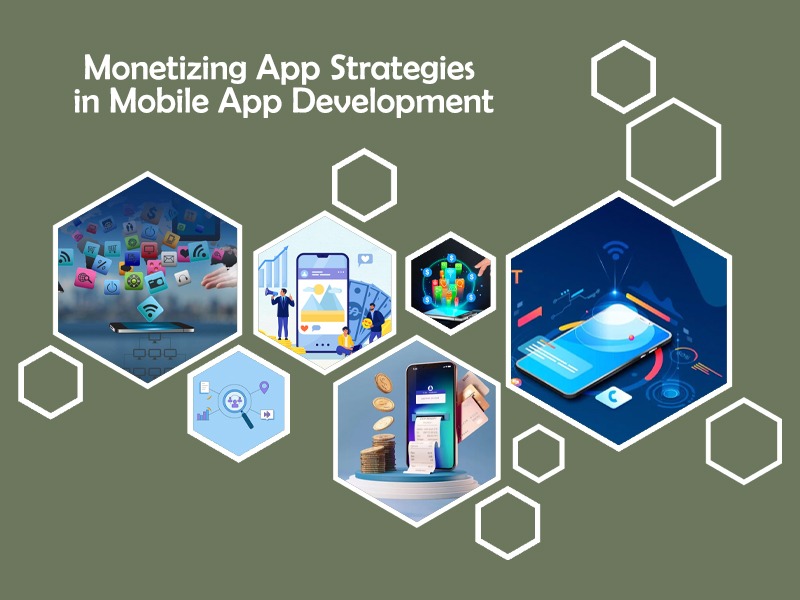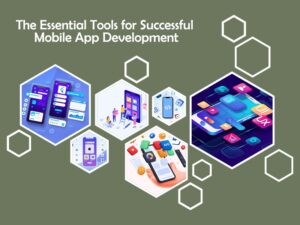Strategies for Success in Mobile App Development
There are over 2 million applications for download from the Apple App Store and about 3.3 million on the Google Play Store. App developers and publishers realize that there is stiff competition, which is why the latest mobile app monetization methods have to be learned. This post is a continuation of our previous one where we discussed app monetization and presented some best practices used by developers.
The market of applications is big and saturated, with millions of options for mobile operating systems available. And, of course, for the developers as well as the business people, it is often up to earning money that a mobile application boils down to. This guide includes a list of the most often-used ways to monetize a website and tips on choosing the right method to make the site more profitable without annoying the users.
What is Mobile app monetization?
Mobile app monetization is the ability to sell a mobile app and its related services by using tools, including advertising, paid memberships, sales of specific applications, and partnerships. Its goal is to monetize app users and help developers maintain, enhance, and generate revenue out of their apps other than making them valuable for users.
Why Is Mobile App Monetization Important?
Mobile app monetization is critical as it makes it possible for app developers to earn money to further engage in-app maintenance and updates as well as spice up the creativity of new apps. Monetization also helps businesses to recover development costs as well as help their app ventures to turn profitable. In addition to the characteristics of financial sustainability, the model provides additional useful features for users or delivers ad-supported valuable content. Hence, its monetization methods are efficient in maintaining its user base by striking a balance between their needs to generate revenues for the business. In a highly saturated app market, the right kind of monetization helps app owners achieve sustainable revenues and application growth and potentially helps pave the way for investment or partnerships.
Best Mobile App Monetization Strategies In 2024
1. Freemium Subscriptions Model
The freemium model is popular with users who can use this application for free while additional features are charged. This model is suitable for applications that are in a position to deliver additional worth through extra features or services, and premium content. Most apps in use today such as Spotify and LinkedIn come with free options whereas the advanced options come at a fee through subscriptions.
Offer a certain amount of features for free while others need to be purchased to make the user feel that they get a good deal while at the same time motivating them to pay for the full version.
2. In-App Advertising
Another form of monetization is advertising which is common for most apps of which most apps are free to download. An advert can range from being simple banners to reaching the next level of interstitials and video adverts. Selecting the appropriate type of ads for the design and functionality of the app is very important to prevent users’ engagement.
You develop your ads and get profit that way, making it ideal for apps that don’t take money from their users. Users are not exposed too much to ads but ads based on users’ preferences are more effective by using data.
3. In-app purchases
This model implies selling various kinds of assets, materials, or content that can be located in the application. The primary product promotion strategy is useful for gaming applications and e-commerce applications
Games usually offer in-app purchases of character enhancements or skins and colors while non-game apps offer access to exclusive content or resources.
Check that what is bought is of some value to the user and will be an improvement to the services offered. This game design concept should not rely it pay-to-win mechanics which would cause the users to be annoyed.
4. Subscription Model
People are buying subscriptions for your products because it increases revenue and guarantees a regular flow of income. Customers subscribe to make recurring payments daily, weekly, monthly, or on an annual basis to get paid content or app features.
Applications with frequently generated content including news, fitness, music, and video streaming applications. Include free downloading so that users may see the advantages of the paid version before purchasing it, and have the option to create three levels of access.
5. Sponsorships and Partnerships
This includes partnering with brands or organizations to sell their products or services within the application. Sponsorships can be in the form of creating content for the sponsors or creating an additional feature altogether that brings value to the application.
An application that is associated with fitness could give rebates on products with a sports brand. To promote your app, enhance opportunities, or provide users with worthwhile content, it is useful to cooperate with a similar brand.
6. Data Monetization
Data monetization is the process of gathering user data and then reselling it to other firms. There is a lot of money in it, but it has to be done right, and privacy and data protection laws have to be respected.
The GDPR and CCPA make data privacy laws dependent on user information and consent. As with Facebook, users should know in advance what data is gathered, and how it is processed and never share users’ ID information.
7. Crowd Funding
Crowdfunding can only be possible for a unique app that has a niche market and the consumers in the market. Before even creating the application, you reach out to the potential users on Kickstarter or Patreon to receive funding for your project.
You get people who are willing to see your app do well because they have invested so much into it both monetarily and emotionally. The problem with reward-based crowdfunding is that the sales pitch and a focus on the community’s needs hold a lot of weight.
Choosing the Right Monetization Strategy
An ideal monetization strategy to embrace in your app depends on the category of your App, the target audience, and the level of engagement wanted from users.
User Experience
At any given time, always seek to put the user first. If your app has excessive ads or constant reminders to make in-app purchases, one can be guaranteed that the rates of abandonment will be high.
Market Research
Find out what has been working for the most popular apps within your category to avoid experimentation on your path.
Testing and Optimization
Resume and analyze the key user engagement data within each of the chosen monetization models and make adjustments based on this data.
Compliance
It is important to make sure that the monetization plans of your app adhere to app store rules, guidelines, and regulations regarding data privacy.
Best Practice Practices for Mobile App Monetization
You note that app monetization should not compromise on the view that the user gets to find. Regardless of the app monetization type that a developer chooses, app monetization should come second to the user experience. That apart, the following should be looked into by the developers while considering revenue building of the mobile apps.
Prioritize User Experience
Since there are always going to be people who leave, developers should be consistently growing their user base. It is these inexperienced users who are so crucial to the ongoing success of any mobile app, let alone its mere existence in today’s world.
Hybrid Monetization
The use of several app monetization approaches is efficient because it minimizes the impact of the disadvantages and limitations that may be encountered in the application of any approach.
Analytics and Data
The best method of improving an app’s revenues is through the use of analytics. When a developer aligns themselves with an app monetization platform, he or she should make certain that getting solid updates on revenue figures, user engagements, and location. This data can then be utilized well or even sold to marketers for the gains of a constant income.
Conclusion
In this article, we looked at the best practices for monetizing apps for use by app developers. In summary, the strategy that is most applicable to an app developer will more or less depend on what the app is all about and who is most likely to use it.
If you want to make more than $2,000 monthly in ad revenue from your website or app, please feel free to reach out to us today to find out how angelwingstourism.com can help boost your ad revenue and fill your ad spaces optimally.




